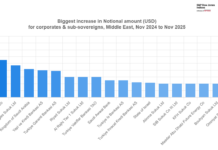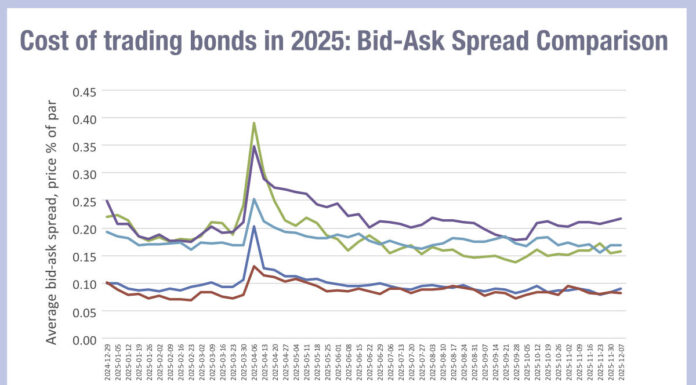Dealers are competing fiercely to support clients in emerging market bonds, jumping between optimal electronic execution methods and developing nascent trading algorithms themselves where data is available. With inflows into EM debt funds rocketing, sell-side traders must navigate individual markets which are tossed and turned by a multitude of macro-economic dynamics.
Morgan Stanley reports that EM debt funds saw inflows worth US$1.7 billion in the week of 6 October, after gaining inflows of US$3.7 billion in the previous week. The bank notes that returns for hard currency funds stand at 11.15% and 15.8% for local currency funds.
This creates a complex picture for sell-side firms. The need to deliver liquidity consistently at competitive spreads across local and hard currency bonds. That requires a sell-side desk to manage a considerable range of instruments, currencies, and risk for trading and hedging.
Offsetting the risk positions they have aggregated via market making demands access to a range of execution methods, that will suit markets which might be inherently illiquid, or have a very small pool of counterparties, in addition to the diverse triggers for market activity and volatility.
EM dynamics
The first fundamental element affecting the market this year has been the very heavy new issuance, which has boosted liquidity and supported price formation. The second has been America – the US economy and rate changes are both significant for emerging markets due to the level of trade that the US participates in globally. Consequently, US import taxes have been hugely influential and the more recent US government shutdown has been detected in EM assets. More subtly, dollar weakness and low confidence has increased interest in EM local currency debt, as noted in the Morgan Stanley analysis of fund flows, with issuance being cheaper in local currencies.
Traditional macro aspects are no less important. Rate cuts in EM central banks often move ahead of the developed market banks and while they do not move uniformly, there has been aggressive cutting in Turkey, and very early cutting by Poland, South Africa, Korea, Malaysia, China and Philippines already this year.

“As they adjust policy rates, the duration risk profiles of the dealers and the entire market changes,” says Roheet Shah, head of dealer relationships and head of Hong Kong at MarketAxess. “Funding costs change, and client flows change. This forces bond dealers to recalibrate their trading strategies and their view on risk warehousing behaviour. Where we’re seeing central banks cutting rates, dealers typically increase their bond buying activity, as pre-positioning ahead of any anticipated buying or demand from the asset managers.”
Trading adaptability
From a trading point of view, adaptability is king. Taking on a client’s order – be it for a portfolio trade, a smaller electronic clip or a block trade – requires the right connectivity with clients, but dealers also need a way to trade that position back out into the market without information leakage.
The Request-for-Market (RFM) protocol helps by disguising the direction a client is trading in and allows them to trade in size, even in more fragmented local currency markets, with only the winning dealer knowing the trade details. In indexed markets, portfolio trading is notably useful and has also taken off in other hard currency EM markets.
Protocols that support the trade initiation via all-to-all or directed request for quotes (RFQ) are also highly supportive.
The electronification of markets like India recently, allows these electronic trading protocols to develop in ways that are more challenging in in voice or IB chat only. Indexation – which India saw last year – and which Korea, Saudi Arabia and Philippines are all seeing in future, drives passive investment through exchange traded funds (ETFs) and makes the access via electronic means all the more pressing.
For dealers building their own trading capacity, the developed credit markets have seen a boom of trading algorithms, and this too will increase in EM.

“In developed markets we are seeing double digit number of algos operating in the space, conversely only a handful or so in EM credit” says Chris McLoughlin, Head of EM Dealer Sales, CEEMEA at MarketAxess. “We anticipate the number of EM algos to grow, as more sell side banks enhance their systematic trading functions across the EM asset class.”
Fundamental to supporting these models is the quality of the data in a specific market, to allow pricing to be offered at a viable price point to allow click trading for clients. Partnering with data providers at this point can be critical in order to ensure effective trading models can be rolled out across the broadest range of markets.
E-trading unlocks enormous potential for sell-side firms to execute in the dealer-to-client and dealer-to-dealer emerging market space, by increasing capability and mitigating risks. Yet the range of capabilities needed will make partnership with e-trading providers invaluable to rapid and successful deployment.
©Markets Media Europe 2025















